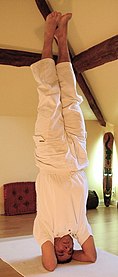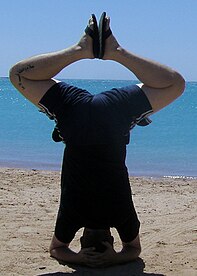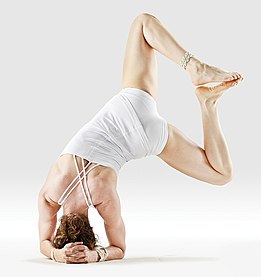Headstand: Difference between revisions
Appearance
Content deleted Content added
m Moving from Category:Gymnastics manoeuvres to Category:Static elements (gymnastics) using Cat-a-lot |
Rescuing 1 sources and tagging 0 as dead.) #IABot (v2.0.9.2 |
||
| Line 25: | Line 25: | ||
* [https://www.youtube.com/watch?v=MG_gP46E21Y A video of a head stand] |
* [https://www.youtube.com/watch?v=MG_gP46E21Y A video of a head stand] |
||
* [https://www.yogateachertraining-india.com/headstand-or-sirsasana-advantages-disadvantages-precautions Freeze and Headstand Tutorial] |
* [https://www.yogateachertraining-india.com/headstand-or-sirsasana-advantages-disadvantages-precautions Freeze and Headstand Tutorial] {{Webarchive|url=https://web.archive.org/web/20200811001816/https://www.yogateachertraining-india.com/headstand-or-sirsasana-advantages-disadvantages-precautions |date=2020-08-11 }} |
||
{{Strength training exercises}} |
{{Strength training exercises}} |
||
Revision as of 15:19, 29 December 2022

The headstand, or sometimes head stand, is a pose that is an inversion posture of standing head down. The technique is used in different settings such as yoga, breakdancing, acrobatics and beginner gymnastics.
Health risks
If the headstand is not done perfectly, the performer is likely to suffer head injury from standing on the head.
In yoga
The yoga headstand, Shirshasana, may be balanced and symmetrical from all perspectives, even though not always in a legs-vertical position. The asana has many variations, several of them asymmetrical.
-
Yoga headstand, Shirshasana
-
With feet as in Baddha Konasana
-
A variation
See also
External links
- A video of a head stand
- Freeze and Headstand Tutorial Archived 2020-08-11 at the Wayback Machine



